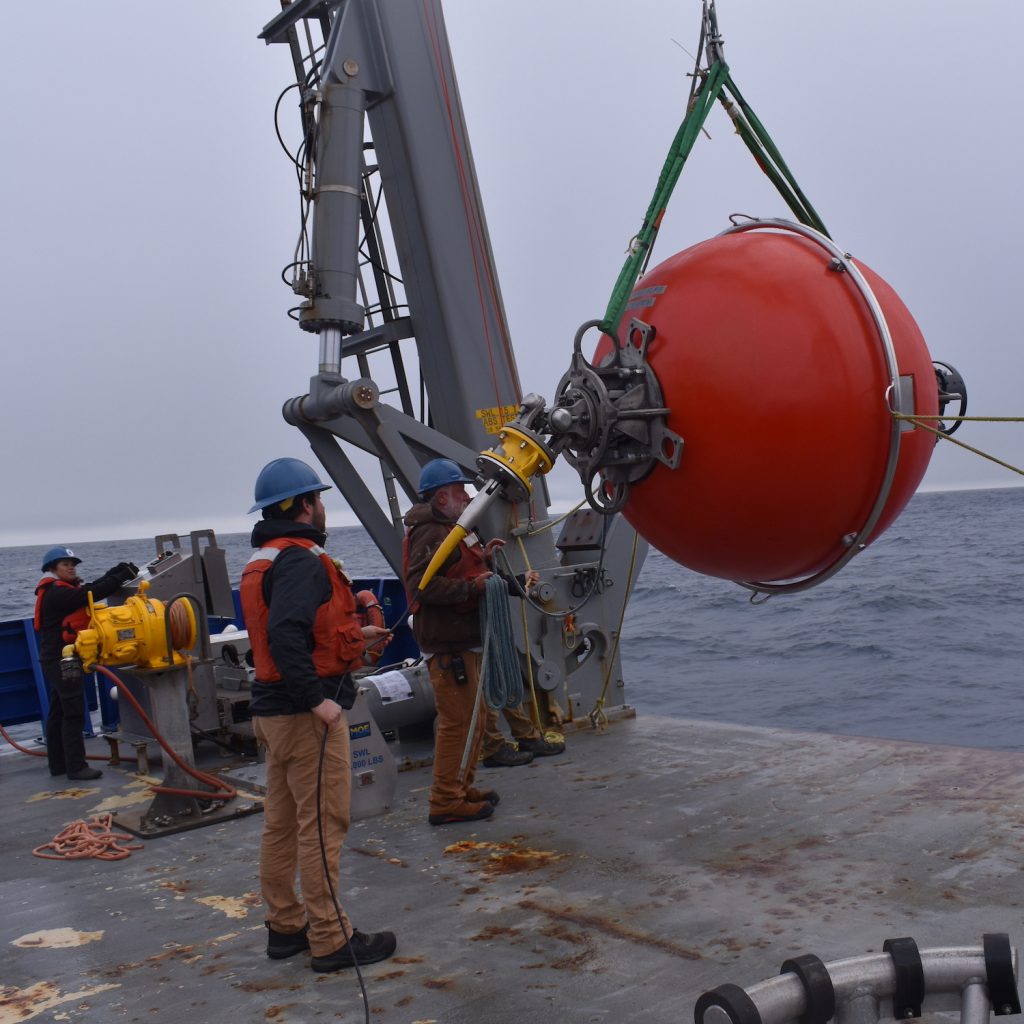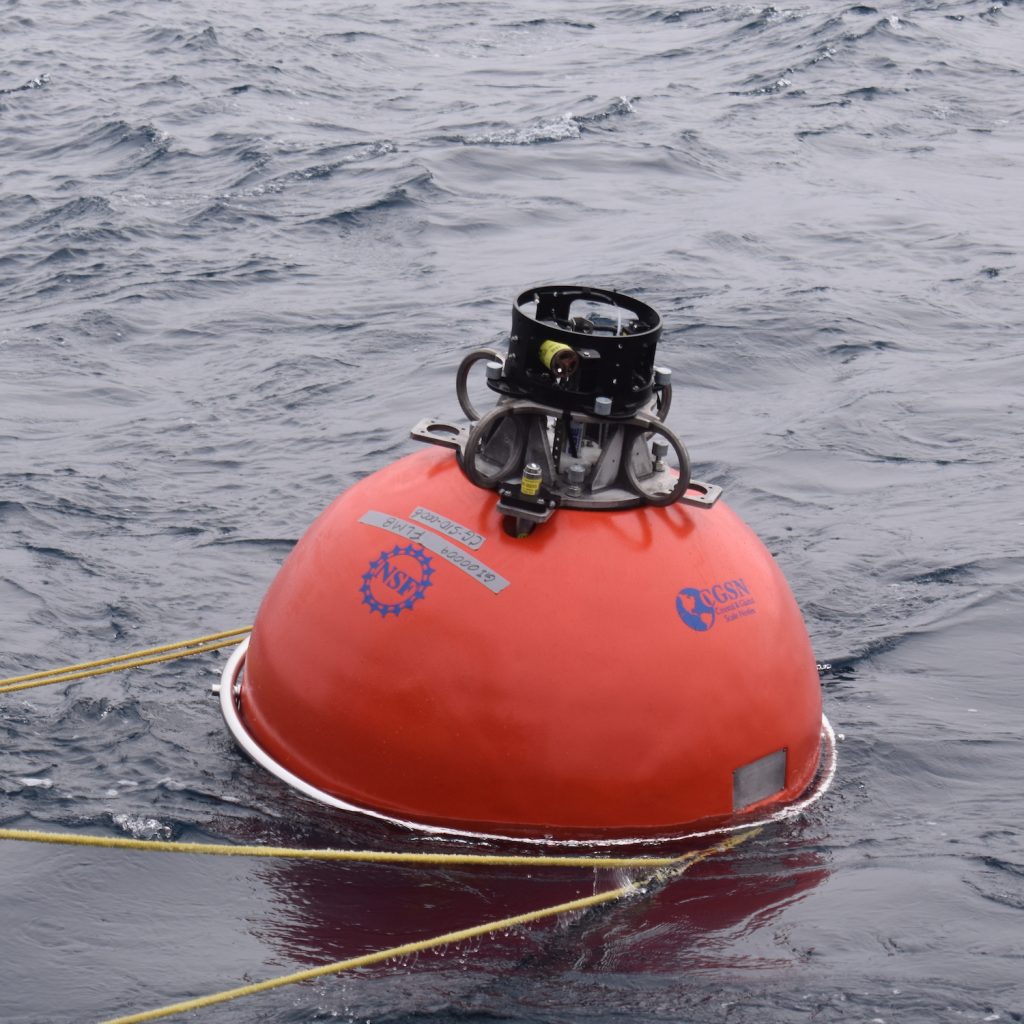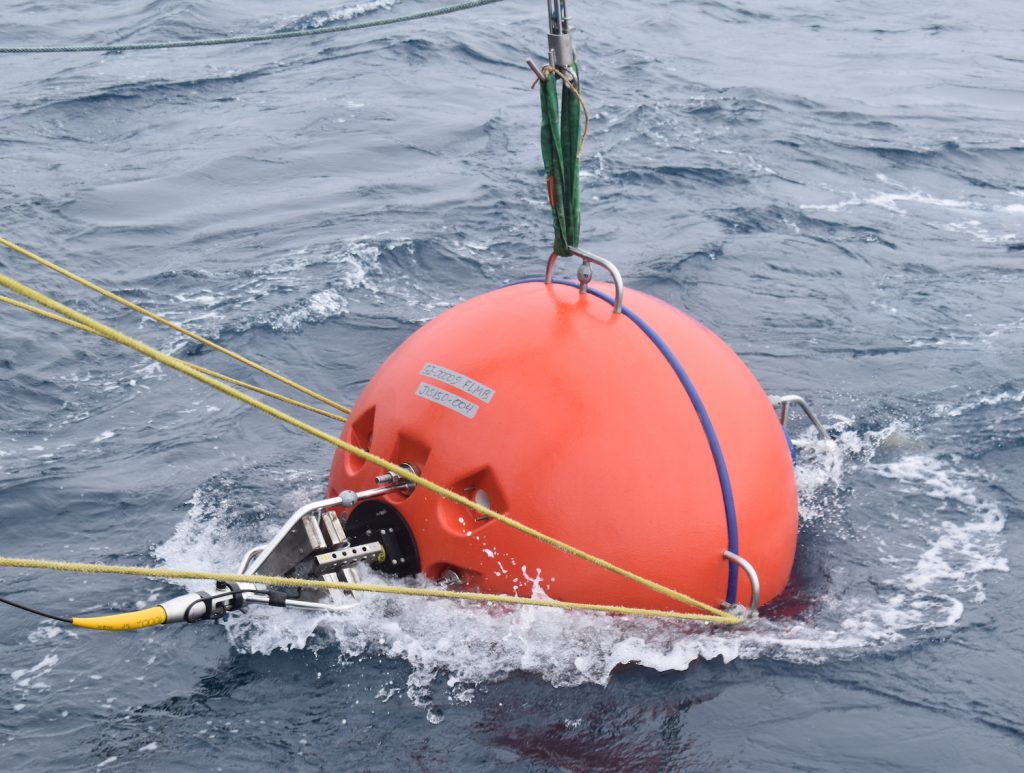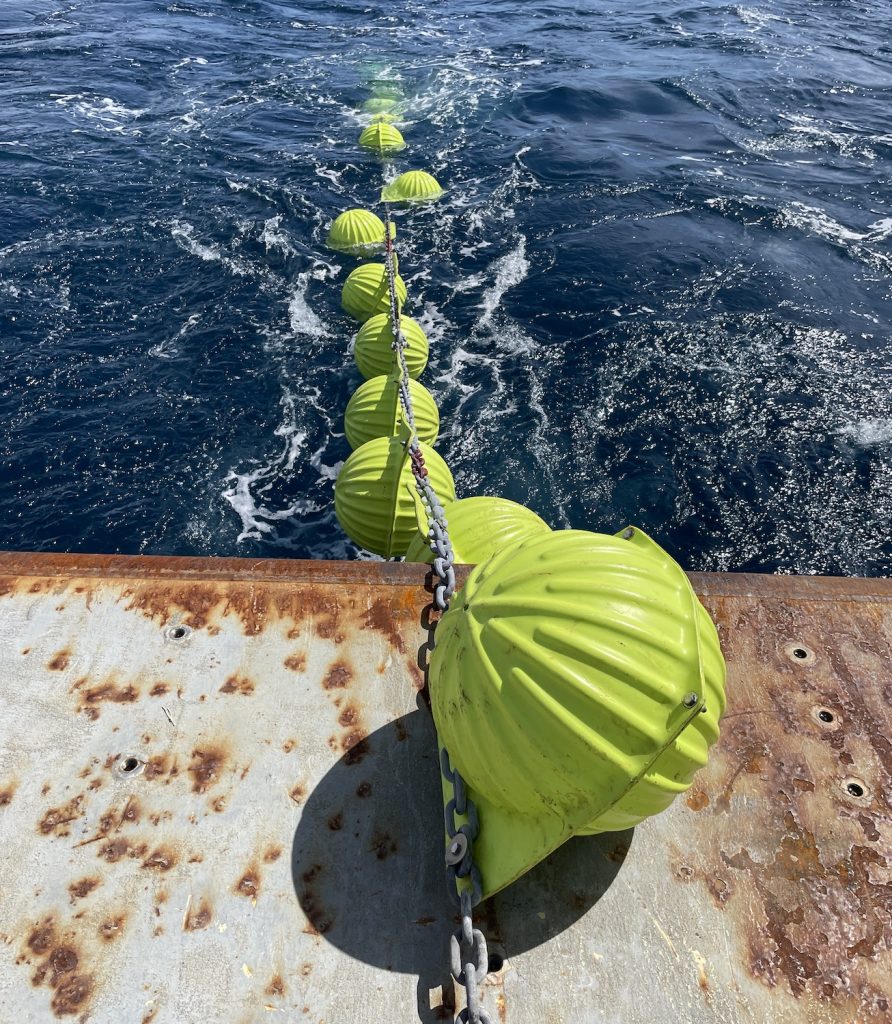Below the surface
Three of the moorings the Irminger 9 team is deploying in the Irminger Sea are Subsurface Moorings, which means that the moorings are entirely underwater – there is no buoy on the surface. There are, however, multiple components that are buoyant to keep the mooring upright in the water column. There is a top sphere at 30 m depth, a mid-water sphere at 500 m depth, and back-up buoyancy at the bottom to ensure that we can recover the mooring if any of the other buoyant components fail. Instruments are mounted to the mooring wire to make measurements throughout the water column.

The top sphere of a Flanking Mooring being deployed through the R/V Neil Armstrong’s A-Frame. Credit: Sawyer Newman©WHOI.

The Flanking Mooring top float in the water during deployment. The sensors mounted in the sphere will measure conductivity, temperature, fluorescence, dissolved oxygen and pH at 30 m depth. Credit: Sawyer Newman©WHOI.

The mid-water sphere holds an ADCP instrument which will measure a profile of water currents from 500 m depth to the sea surface. Credit: Sawyer Newman©WHOI.

Glass balls in protective “hard hats” provide extra flotation at the bottom of the mooring. Their tennis ball yellow color looks almost fluorescent in the brief (and much enjoyed) sunshine. Credit: Sheri N. White©WHOI.